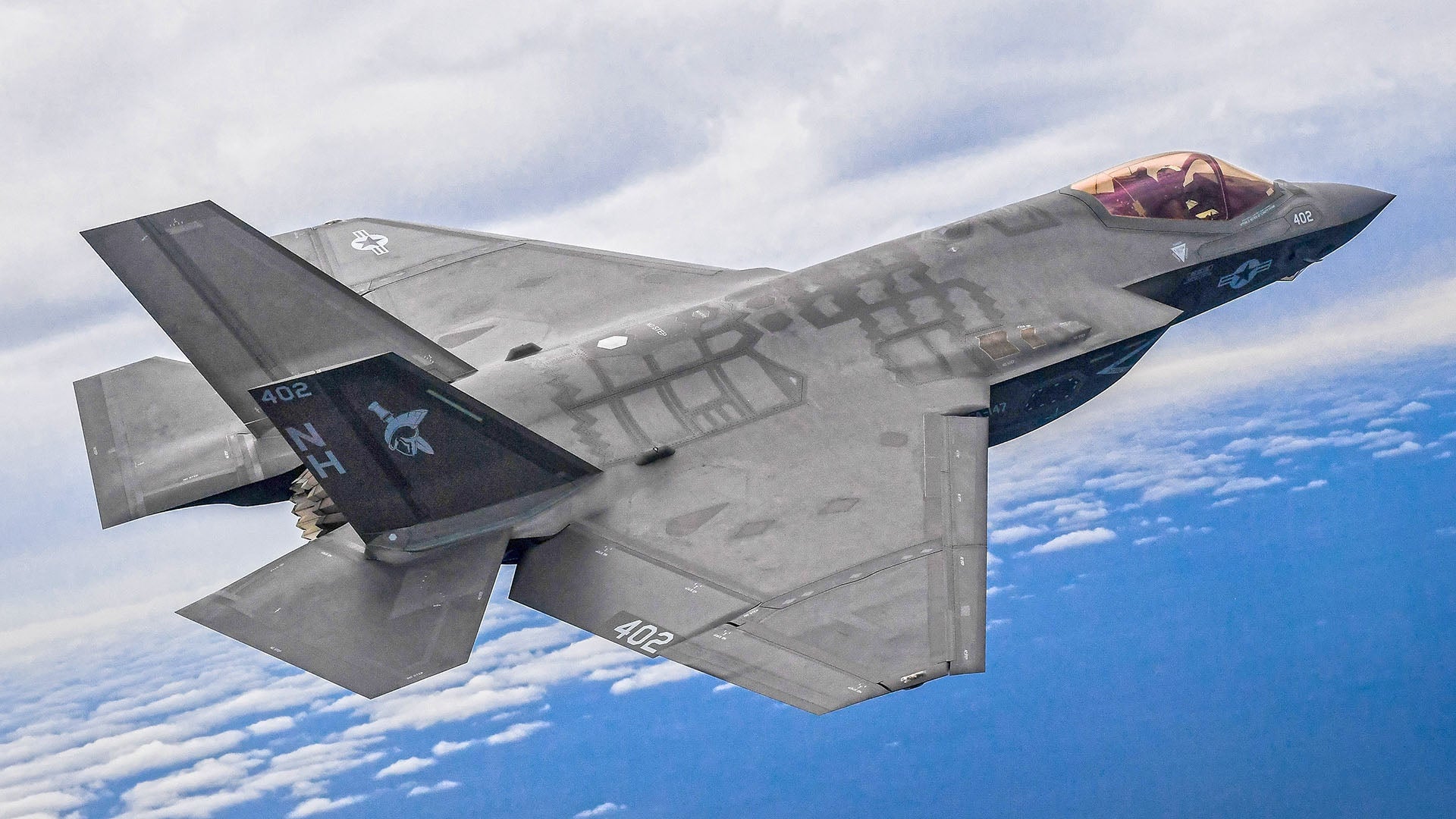The U.S. Navy’s first operational front-line Lockheed Martin F-35C unit, Strike Fighter Squadron 147 (VFA-147) “Argonauts,” has completed two key milestones in preparation for its maiden deployment next year. The squadron will be the first to take the F-35C to sea on a cruise as part of Carrier Air Wing Two (CVW-2) aboard the USS Carl Vinson (CVN-70) in 2021.
The “Argonauts” completed a Weapons System Evaluation Program (WSEP) in combination with the U.S. Air Force in May and June at Eglin Air Force Base in Florida. This was followed by a “5th Generation Advanced Readiness Program” in July at NAS Fallon, Nevada, alongside its fellow CVW-2 F/A-18E/F Super Hornet squadrons VFA-2 “Bounty Hunters,” VFA-113 “Stingers,” and VFA-192 “Golden Dragons.”
The “Argonauts” deployed to Eglin alongside other CVW-2 tactical jet squadrons for WSEP, which is a live missile firing event hosted by the 83rd Fighter Weapons Squadron from May 27 to June 12. A media release from the resident 53rd Wing said its units “facilitated the firing of 26 air-to-air missiles during this event.” The release added: “CVW-2 participated in the event to prepare them for their real-world deployment next year in support of geographic combatant commander taskings.”
The Eglin event, known as “WSEP East 20.09” included CVW-2, the 53rd Wing, 325th Fighter Wing F-22A Raptors that are based at Eglin due to damage at Tyndall AFB that was inflicted by Hurricane Michael, plus Eglin’s 33rd Fighter Wing, which flies F-35As.
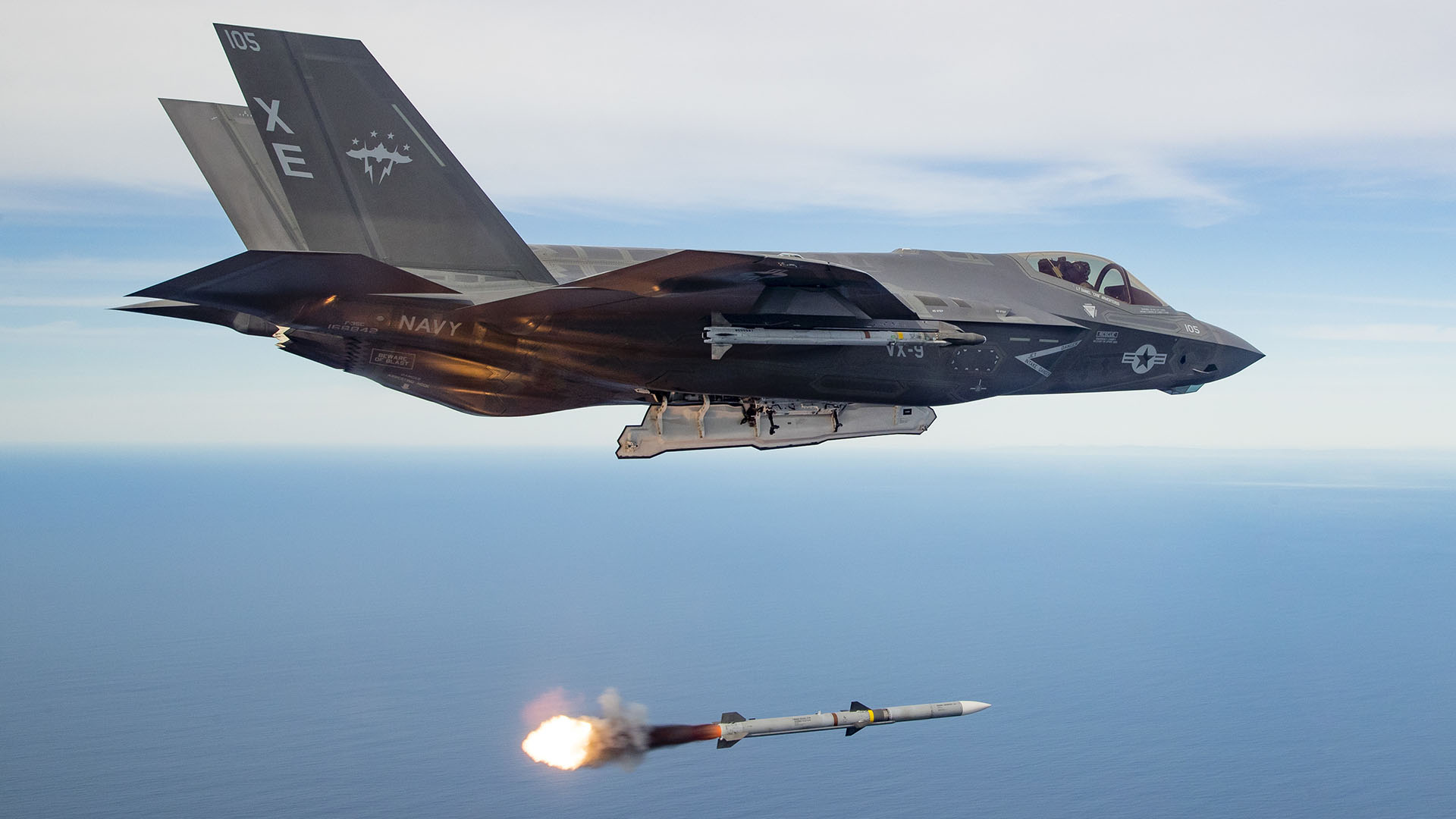
A WSEP can be tailored for air-to-air firings, which is also known as “Combat Archer,” or air-to-ground launches, which is “Combat Hammer.” Both are designed to provide an end-to-end evaluation of the complete weapons system, including the aircraft itself, the building and loading of the missiles, and the actual firing, guidance, and ultimate lethality of the weapons. It has become a somewhat common event for U.S. Navy, USAF, and U.S. Marine Corps fighter squadrons ahead of a major combat deployment.
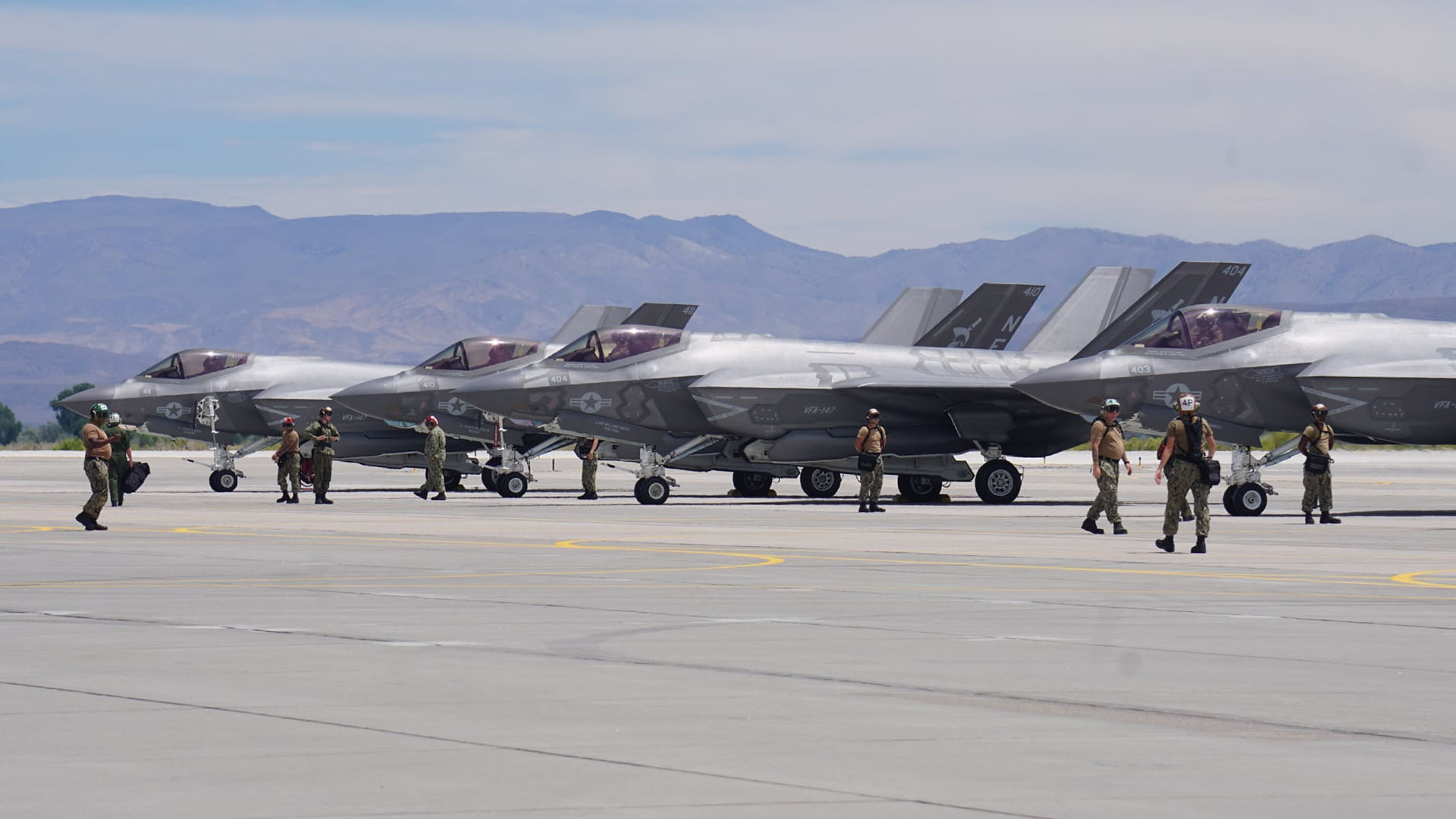
In addition to being a part of CVW-2’s work-up in preparation for its deployment, the 83rd FWS supported operational test shots to gather data. One of the more significant events included AIM-120D Software Improvement Program missiles. This likely relates to System Improvement Program 3, the newest operational version of the AIM-120D, which itself is a major leap on capability above the previous AIM-120C variant.
Raytheon Missile System received a $38.6 million contract for System Improvement Program 3 Engineering Manufacturing and Development upgrades for the AIM-120D Advanced Medium-Range Air-to-Air Missile (AMRAAM) in September 2017. The contract provides for software development to improve the AIM-120D’s performance against more advanced enemy threats.
F-35As and F-35Cs fired seven AIM-120Ds and an EA-18G Growler fired one, according to the news release. It added: “These weapon firings provided valuable data and feedback to combat air force and fleet warfighters and informed strategic weapons allocation and movement decisions.”
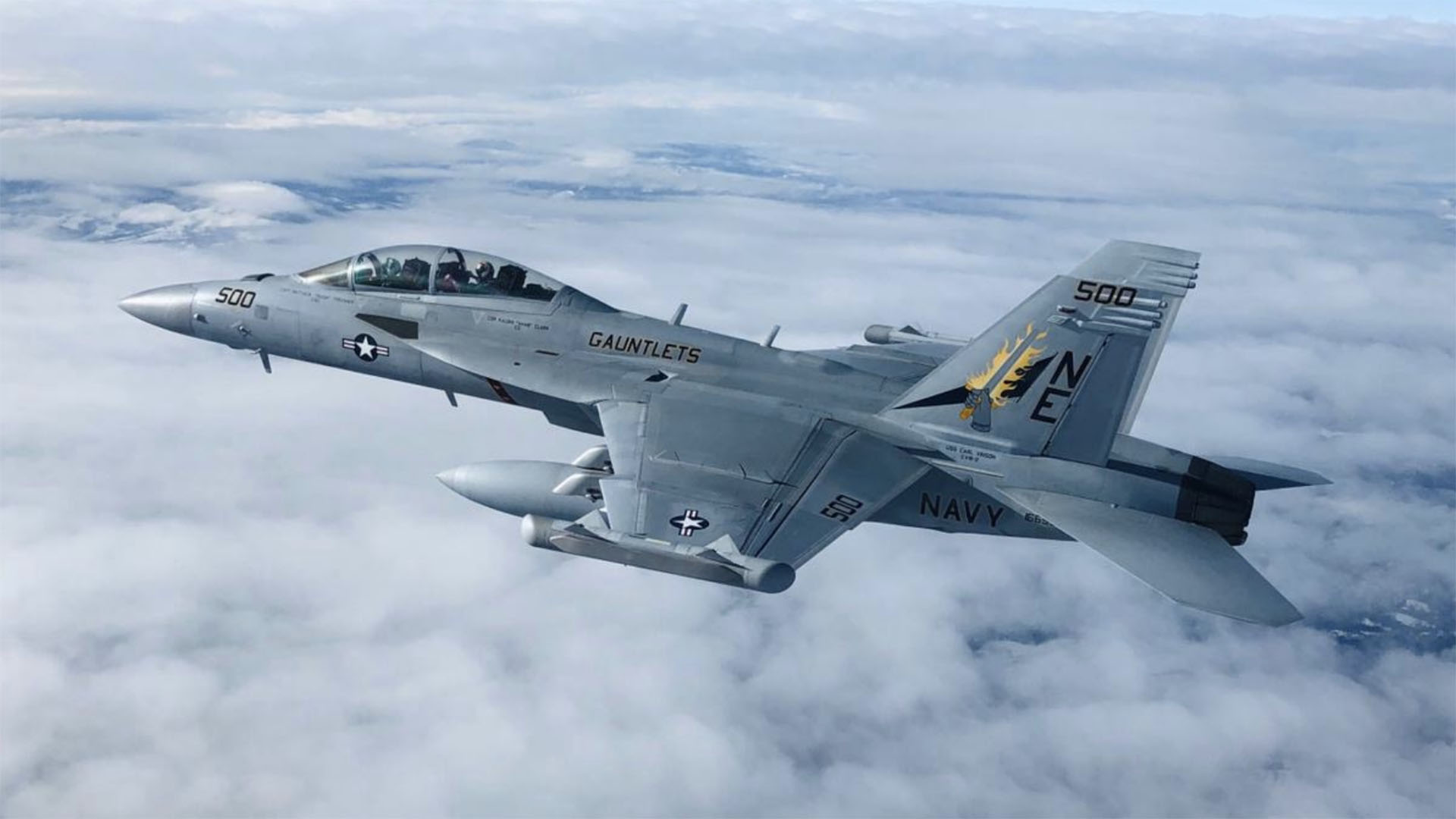
“Thank you all very much for the herculean effort you and your teams provided CVW-2. With your world-class support, we were able to complete 15/15 OFRP — Readiness required shots over the last two weeks,” said Captain Matthew Thrasher, the commander (CAG) of CVW-2.
“This event improved readiness of CVW-2 in preparation for real-world tasking, support of operational test objectives, and gathered critical F-35A/C weapons employment data,” said Col Nicholas Reed, commander, 53d Weapons Evaluation Group (WEG).
Here is a table showing CVW-2’s current composition of units:
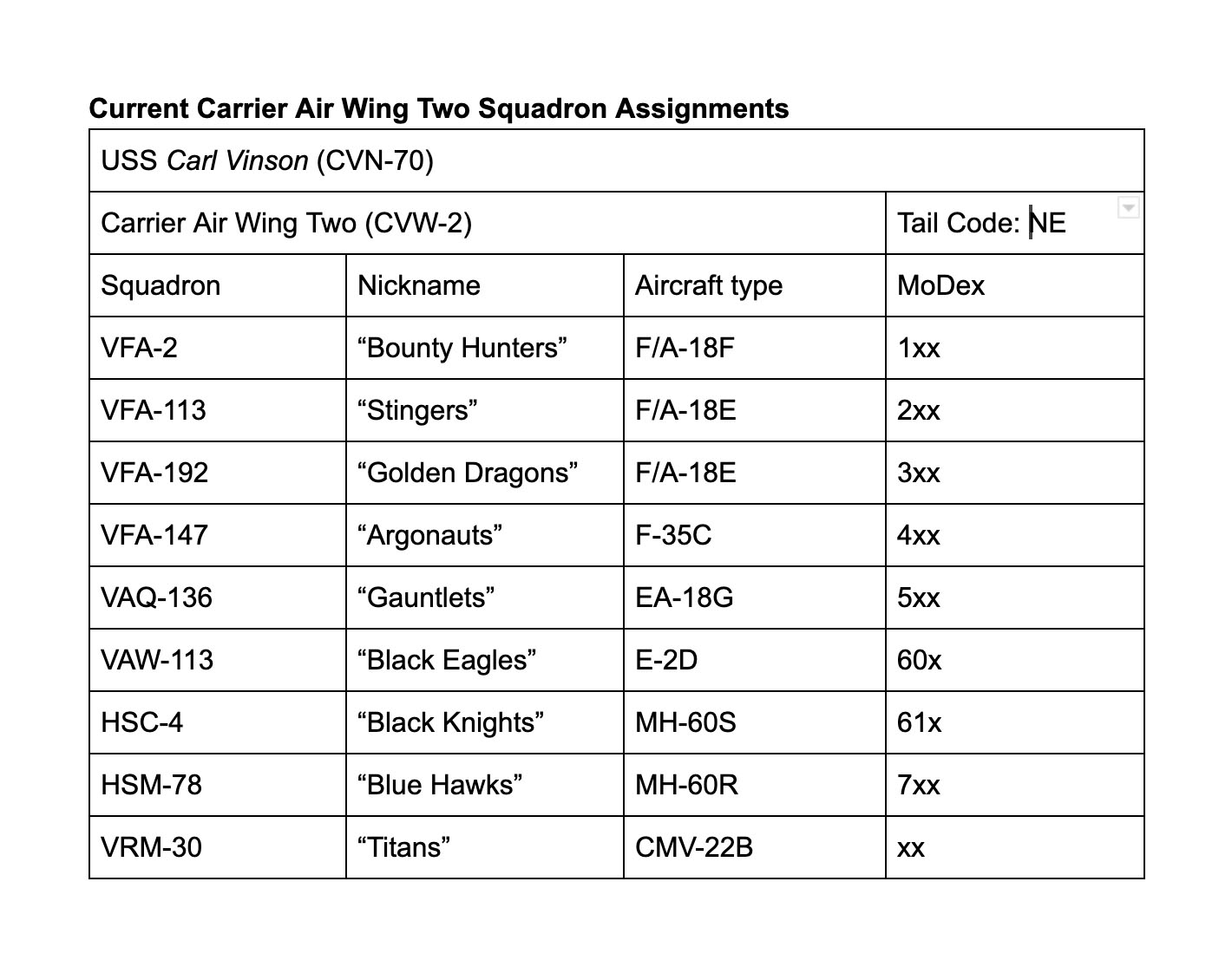
Following WSEP, the elements of CVW-2 moved to NAS Fallon in July for the next round of preparatory training. Traditionally known by the Navy as SFARP, the Strike Fighter Advanced Readiness Program, the F-35 squadron has coined it the “5th Generation Advanced Readiness Program.” This training will have included a pivotal role for VFA-147’s new TOPGUN graduate, who oversees the squadron training program. The squadron’s Facebook page remarked, “We crushed it!!!”
A traditional work-up cycle would next see CVW-2 going into carrier qualifications (CQ) and TSTA, the Tailored Ship’s Training Availability. This is designed to support the aircraft carrier’s crew and prepare it to bring the entire air wing aboard. Air Wing Fallon follows, where the CVW comes together for a five-week exercise that brings together all the elements of the CVW, working together in complex exercises on the Fallon Range Training Complex. Finally comes COMPTUEX (Composite Training Unit Exercise), which is basically Air Wing Fallon, but fly from the carrier, and integrates all the Carrier Strike Group’s naval assets with the air wing and each other.

The USS Carl Vinson is expected to arrive in San Diego, California, shortly, following a maintenance period in Bremerton, Washington. The first cruise with the F-35C will also coincide with the first Navy deployment with the new Bell-Boeing CMV-22B Osprey Carrier Onboard Delivery (COD) tiltrotor. VRM-30 “Titans” is now in possession of two CMV-22s at its home base at NAS North Island, California, and the squadron will also make its first operational detachment aboard the USS Carl Vinson in 2021.
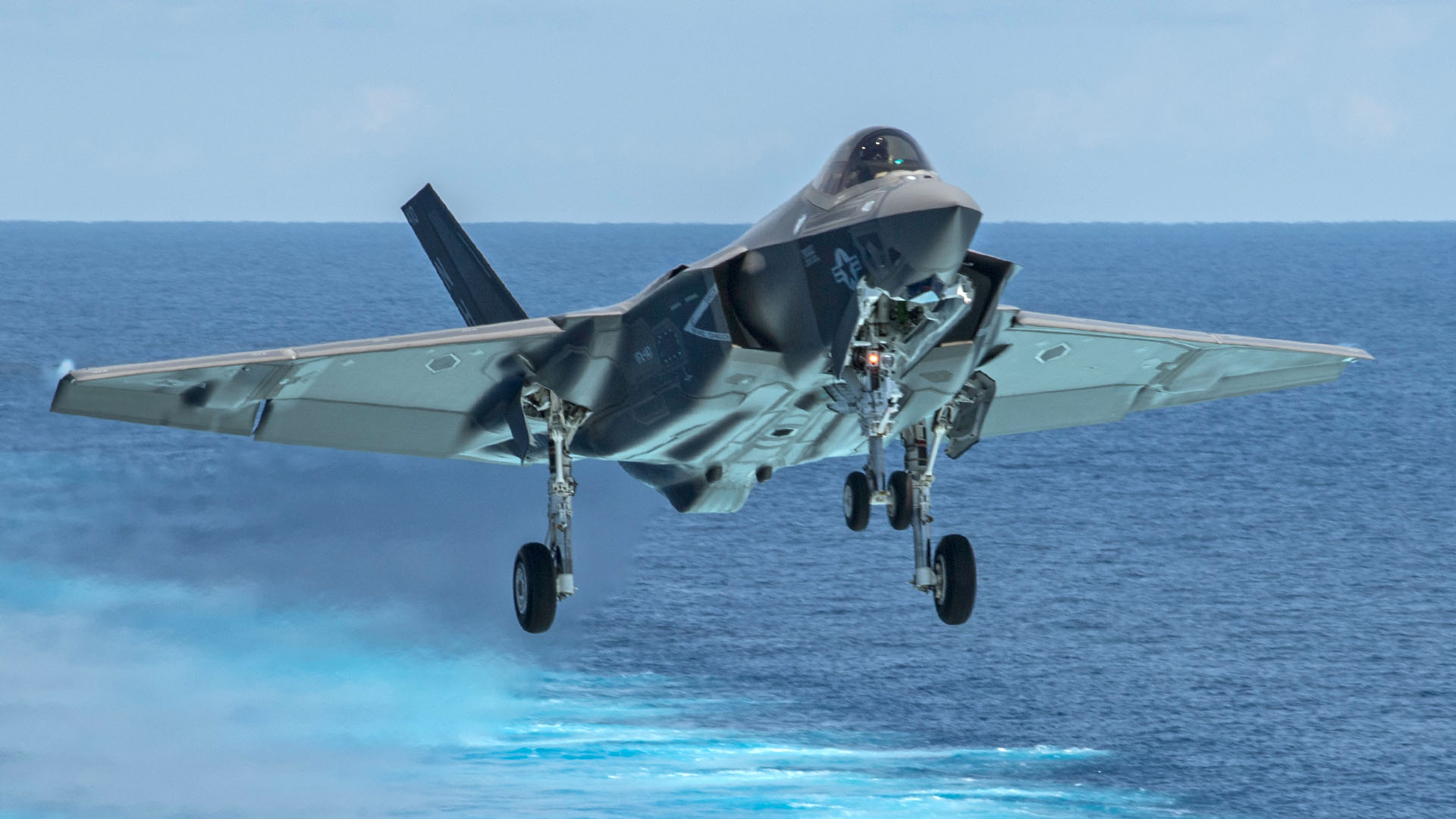
The deployment for CVW-2 in 2021 will mark a major milestone in U.S. naval aviation history. The “Argonauts” will be taking a brand new fighter on a maiden cruise for the first time since the Super Hornet joined the fleet in 2002. Above all else, the F-35C will finally give the Navy’s carrier’s air wings the stealth capability they were promised 30 years ago.
So, suffice it to say that there is a lot of pressure on the Argonauts and their sister squadrons to get it right!
Contact the author: Jamie@thedrive.com
